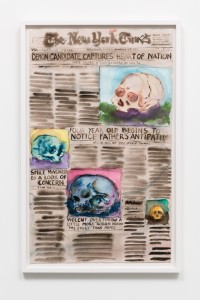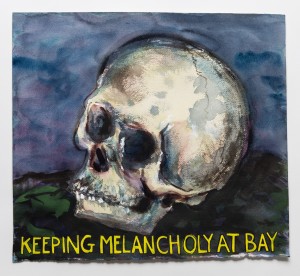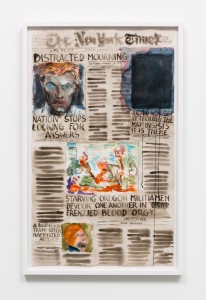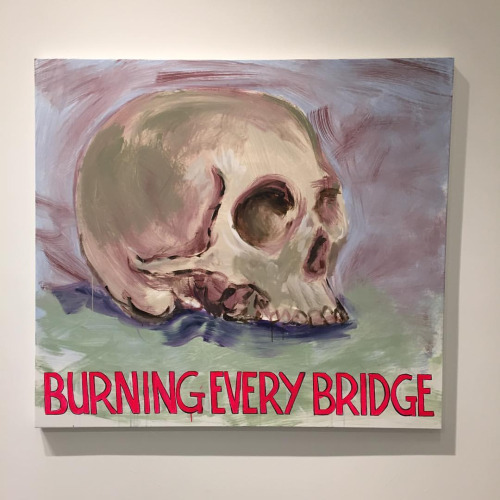These notes are for Marilyn.
“Let’s talk of graves, of worms, and epitaphs….”
William Shakespeare, Richard II, III:2
I woke up this morning thinking about death – my own and others’ (including a friend who may be known to readers of this blog, Marilyn Nix, a former journalist and fixture in the local arts community) – its inevitability, even necessity; its randomness – infuriating yet also comforting; its finality; the adversarial provocation of its implacability; the sheer annoyance of its interruption of our relationships (with all life, the world – not just our friends and business relationships); its sociopathic disregard for narrative; its inherent mockery of the fragile shelter life takes in its evolved forms, textures, adaptations, in consciousness itself; its nullification of all pretense of order; its stone cold indifference to the ecological, biospheric harmonies to which it mutely contributes; its absurdity.
Long before the human species became a pestilence on the planet, Shakespeare himself had written at some length on the subject – in King Lear, MacBeth, Richard II (and all the histories), and of course Hamlet. It’s a bit too late to take in Guy Richards Smit’s most recent show at Charlie James Gallery), A Mountain of Skulls and Not One I Recognize (although the gallery may be holding back a few ‘skulls’ from the small ‘mountain’ exhibited in the show); but as humanity continues expediting (or would the preferred term now be ‘enhancing’?) the planet’s death march, and the election year’s political campaigns drag on with no concrete strategy to address that crisis even from the Democratic candidates, and most of the electorate and news media apparently blind to the Republican candidates’ killing field agenda beyond perhaps their uncanny resemblance to some of Smit’s skulls, it may be worth revisiting that “undiscovered country” to be found ‘between the lines’ of Smit’s watercolour New York Times mock-ups as well as the skulls themselves – hilariously trenchant memorials to human vanity.
I recall that I had my favorites in the show – standing in both for those human specimens who inspire some degree of sympathy, endearment, regret or pathos, and those for whom I relish my contempt in equal measure. (They also inspire self-examination: do I take pleasure in having been right as I watch the planet die? No, I do not.)
Most of the skulls (and for that matter, the larger – essentially over-sized newspaper-scaled – “New York Times” parodies) were executed in Smit’s signature watercolour (or variable watercolour, gouache and ink combinations) – the perfect medium for his fleeting, atmospherically fragile (though not exactly delicate), ironically applied as well as inflected, aperçus. Most of the small skulls (roughly 14×12 sq.in. on average, some slightly larger) are set in a blank, undefined or vaguely atmospheric field, some with the lower field rendered as a muddy (or watery) foreground. They’re usually note-perfect: flat or with a bloodless pallor, desert sandstone or camouflage, marshy tidepools (that sounds almost lucky right now), or with a suggestion of post-flameout pink or orange. A few have a slightly more articulated foreground, middleground and upper atmospheric – sand dunes, grassy knolls, or muddy fields, against rising waters and darkened skies to soak up the ossified remnants. (I giggle or gag as I write this, thinking of a subsidiary leitmotif in a Mary Gaitskill novel – Veronica I think – ‘ossifier, heart’s desire….’ yeah baby….) A few are double-captioned – with text at both the top and bottom of the field, underscoring or amplifying an irony or aburdity. There were also a few larger pieces – these done in acrylic on canvas – as if Smit wanted to memorialize something essential about the human condition. “Hard Worker’s” large brown eye sockets float upwards on their watery berth, the jaw closed and stoically set, upper and lower teeth melded into each other. The lower half of “Kingmaker’s” jawbone is either missing or sunk beneath the grass, and a bruise-like smudging indents the area above his cheekbone (trust me, it’s a him). “Burning Every Bridge” is also missing its lower jaw – set in the most vaguely vaporous void (the closest Smit comes to the perfect Avedon-white void), its large eye sockets staring fixedly straight ahead into a meaningless distance. Smit, like Shakespeare, knows his species well: the kings and their vassals, the workers and soldiers, and the outlaws and killers – we really haven’t changed much since the Greek gods and doryphori. We might as well go extinct. 
You hear Hamlet’s last act charnel survey in the back of your head as you take in Smit’s hillock of grim hilarity (all the while reminded of more horrific contemporary events). A perfectly set and intact, seemingly unscarred, wide-eyed straight-ahead stare and clenched jaw is marked as “NEEDY and (in slightly smaller characters) Calculating.” “Cocksure’s” mug is happily all but obliterated. (No – this doesn’t imply any justice.) “Unbelievable Nurturer” is that kindly nanny’s or nurse’s face you will carry with you to your grave, as surely as you clutch your teddy bear. An open, rapacious jaw that might move were it not set into an earthen foreground—still wanting, lusting—“Fucks Anything That Moves.” “Clothes Horse”—bold cheekbones that just might last into the next Jurassic—is really just missing a wig and a light contoured coating of some sort. “Nominated” is that eternally optimistic good sport. (Jack Lemmon maybe? Though he actually won two Oscars.)

Guy Richards Smit, “Keeping Melancholy At Bay,” watercolor, gouache & ink on paper (14.75×16.25 in.) 2015
There are a few that are especially nuanced or subtle, yet no less hilarious and frequently spot on. Consider “Descending Into Panic,” with its glassy sockets and just perceptibly open jaw sinking into a watery foreground. Or “Drawn to Humiliation.” Or “Marshalling Social Theory in Defense of Personal Impulse.” (No, it’s too smart-looking to be a politician – but there are plenty of those here, too.) Or “Your Friend At Arm’s Length” (of course Smit understands how social cyber media have magnified trends in human relationships and society). Donald Trump is here – boy is he ever! (I’m not sure about Hillary; Bernie may be here – but his skull falls into that ‘arm’s length’ terrain.) There are several of me here – but I’ll let you try to figure them out. I’m not sure “Into Really Fucked Up Shit” quite describes me adequately. “Art Lover” doesn’t do it; and “Keeping Melancholy At Bay” doesn’t quite either – but then I’m not all that successful at actually keeping melancholy at bay.

Guy Richard Smit, New York Times January 26, 2016, watercolor & gouache on paper, 38×23 in. (2016)
You’ll see a few skulls scattered through the New York Times front (and other) pages here and there (the heads/captions are wonderful: “Smile Masked By A Look of Concern” or “Violent Overthrow a Little More Rough Around the Edges than Hoped”), but here the real wit – and art – emerges between the columns and sections. Smit understands the medium he parodies as well as painting; and he understands it in depth. I’d like to say that the January 29th front page is my favorite, but it’s not. (But there’s Trump right at the top: “Demon Candidate Captures Heart of Nation”) The headline that really tugged at my heart was “Four Year Old Begins to Notice Father’s Antipathy.” Yes. Or how about ‘three days’ earlier on “January 26th” – “Innocent Though Unconvincing.” Bring it. I’ll leave you with two more – on the “January 10th” front page. “Distracted Mourning,” and (beneath a zombie-like head) “Nation Stops Looking for Answers.”
I’m still laughing and crying; but also still looking for answers. Don’t ask me why, but Smit probably has some idea.

Guy Richards Smit, Crippled With Empathy (2015)


